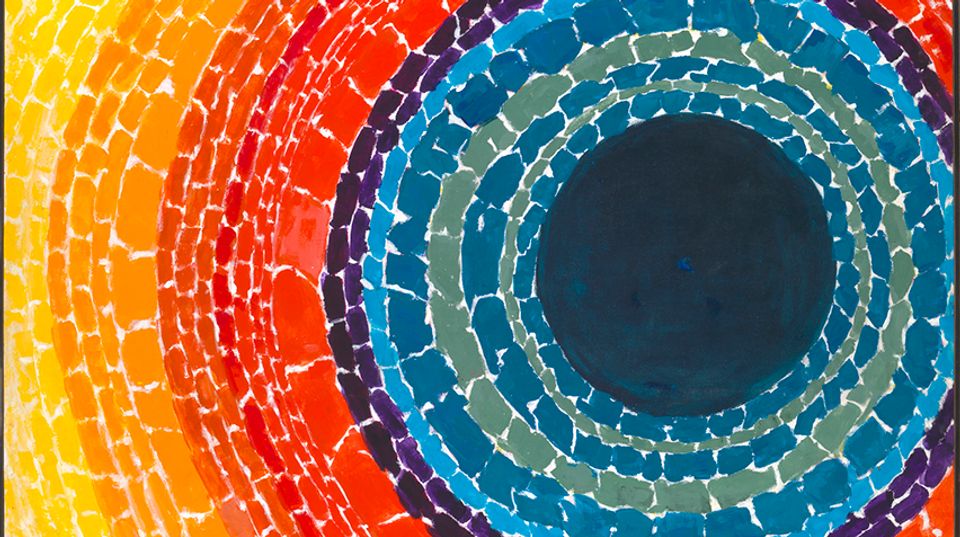
This post is part of an ongoing series on Eye Level: "Q and Art" and is the successor to our series "The Best of Ask Joan of Art." Begun in 1993, Ask Joan of Art was the longest-running arts-based electronic reference service in the country. We retired the service late last year but want to continue to bring you interesting questions and answers about art and artists from our archive.
Answer: M.C. "5 Cents" Jones was a self-taught artist from Louisiana. He spent most of his life working on a plantation picking cotton and other labor. He enjoyed drawing as a young child, and many people encouraged him to continue making art throughout his life. Eventually, his work was noticed by collectors, and he was able to devote his time to painting. His nickname was "5 Cents" because he was just five feet tall.Question: Who is M.C. "5 Cents" Jones? Why is he named "5 Cents"?
Jones's paintings depict the life he knew in rural Louisiana: workers on the plantation, cotton gins, church picnics. He also painted portraits and scenes inspired by his religious beliefs.
The Smithsonian American Art Museum owns two portraits by Jones: Untitled (Black Woman and Flowers) and Untitled (Man in Black Suit, Girl in Blue Dress). The subjects of both paintings are wearing their Sunday clothes and surrounded by brightly colored flowers. Because of his biography and unique expression Jones's pictures are part of the museum's collection of contemporary folk art. The artists and artworks in this collection are diverse; highlights range from William Hawkins's Ohio State University Stadium painted with house paint on paneling to James Hampton's Throne of the Third Heaven of the Nations' Millennium General Assembly made of discarded office furniture and foil. Although the artists use different materials, they share a devotion to creating their artworks. According to a newspaper profile, M.C. Jones found joy in his colored pencils and had unending energy for painting. You can view more folk art on the museum's website.
To read more about about folk art and folk artists look for the following books: Lynda Roscoe Hartigan's Made with Passion: The Hemphill Folk Art Collection in the National Museum of American Art, Tom Patterson's Contemporary Folk Art: Treasures from the Smithsonian American Art Museum and Betty-Carol Sellen and Cynthia J. Johnson's Self Taught, Outsider, and Folk Art: A Guide to American Artists, Locations and Resources.



















